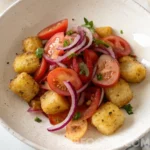Mango sago dessert is a refreshing tropical treat that’s quickly gaining popularity outside of Asia and for good reason. Creamy, sweet, and loaded with fruity flavor, this dish is the perfect answer to hot summer days or after-dinner cravings. With its base of soft sago pearls, rich coconut milk, and ripe mango chunks, it blends exotic simplicity with creamy indulgence. Whether you’ve spotted it on an Asian dessert menu or are curious about making it yourself, this guide will give you everything you need to know.
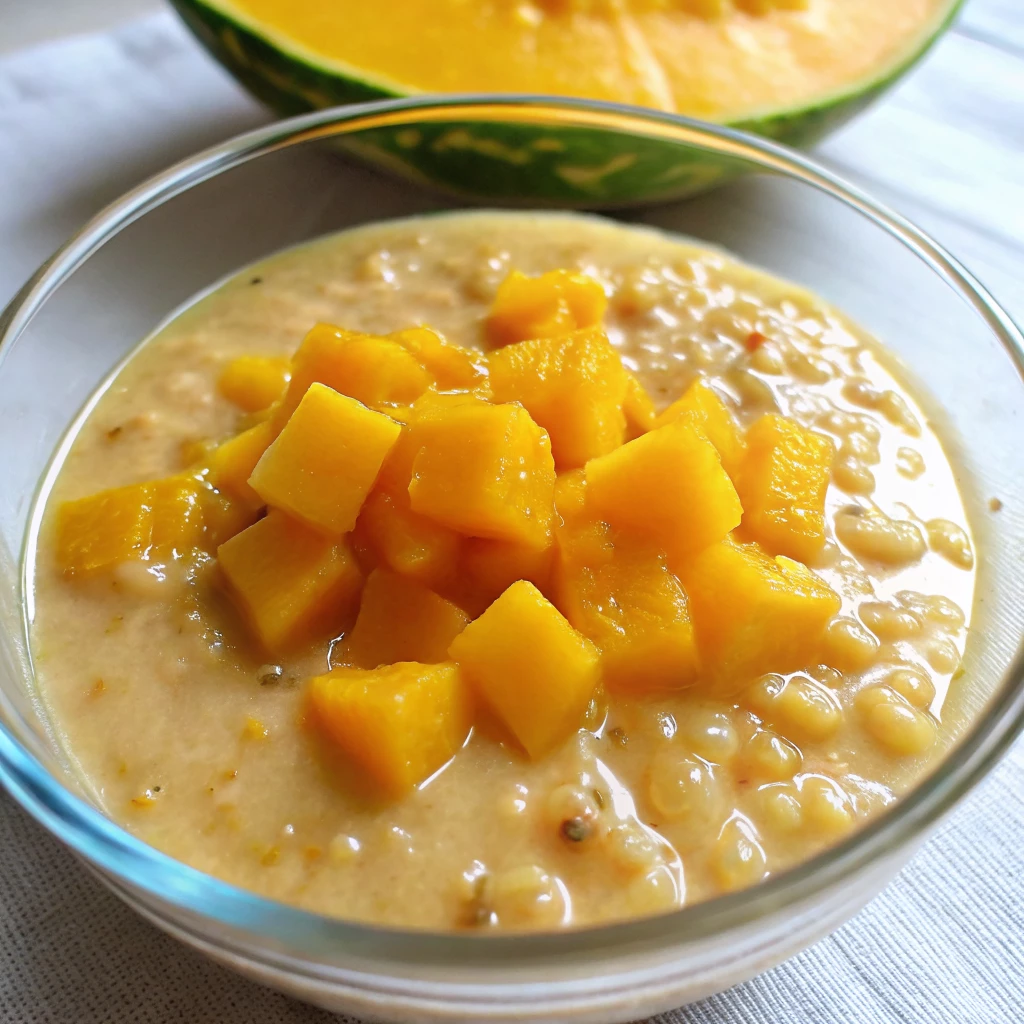
We’ll dive deep into what mango sago dessert really is, why it’s good for you, how to make it at home, and even how to twist it with fusion flavors. Plus, we’ll explore fun variations, address commonly asked questions, and show you how to serve it like a pro.
Table of Contents
What Is Mango Sago Dessert?
Where It Comes From
Mango sago dessert first appeared in upscale Hong Kong restaurants in the 1980s. Known locally as “Yang Zhi Gan Lu,” it means “sweet dew drops.” Its tropical flavors, cooling texture, and vibrant look quickly made it a hit across Southeast Asia.
Today, it’s common in Taiwanese cafés, Filipino households, and trendy dessert bars worldwide. It blends Eastern ingredients with a Western-style creamy dessert feel.
What’s in It
The classic mango sago dessert includes:
- Fresh mango: ripe, juicy, and sweet
- Sago pearls: small, chewy starch pearls
- Coconut milk: adds creamy richness
- Sweetener (optional): for tart mangoes
- Ice or water: to chill the mix
Some variations use evaporated milk or almond milk for a vegan twist. You can blend the mango or leave it in chunks it’s flexible!
Why Everyone Loves It in Summer
This dessert is light, cold, and tropical, perfect for hot weather. Mango hydrates, sago soothes, and coconut milk makes it smooth without heaviness. Plus, it looks stunning bright yellow-orange and silky, it’s made for summer tables and social media.
Health Benefits of Mango Sago Dessert
Is Mango Sago Dessert Healthy?
Yes, mango sago dessert can be a light and nutritious choice especially when made with fresh ingredients and minimal sweeteners. It’s naturally gluten-free and can be dairy-free if you use coconut milk or almond milk.
One serving offers:
- Natural sugars from ripe mangoes
- Healthy fats from coconut milk
- Hydration and fiber from fruit
- Easy-to-digest starch from sago pearls
It’s a smart alternative to heavier, processed sweets and fits well into a summer or plant-based dessert plan.
Sago vs Tapioca: Are They the Same?
Sago and tapioca look alike but aren’t the same:
- Sago: comes from the sago palm
- Tapioca: made from cassava root
Both are high in carbs and gluten-free. In mango sago dessert, sago is preferred for its chewy texture and authentic Asian flavor.
Why Mango Is a Great Ingredient
Mango adds more than just flavor. It’s packed with:
- Vitamin C and A
- Antioxidants
- Natural fiber
These support your immune system, digestion, and skin health.
Want more delicious dessert recipes? Explore more here Dessert Recipes
How to Make Mango Sago Dessert at Home
Step-by-Step Recipe for Mango Sago Dessert
Making mango sago dessert at home is easier than you think. All you need are a few simple ingredients and 30 minutes of your time. Here’s how to do it:
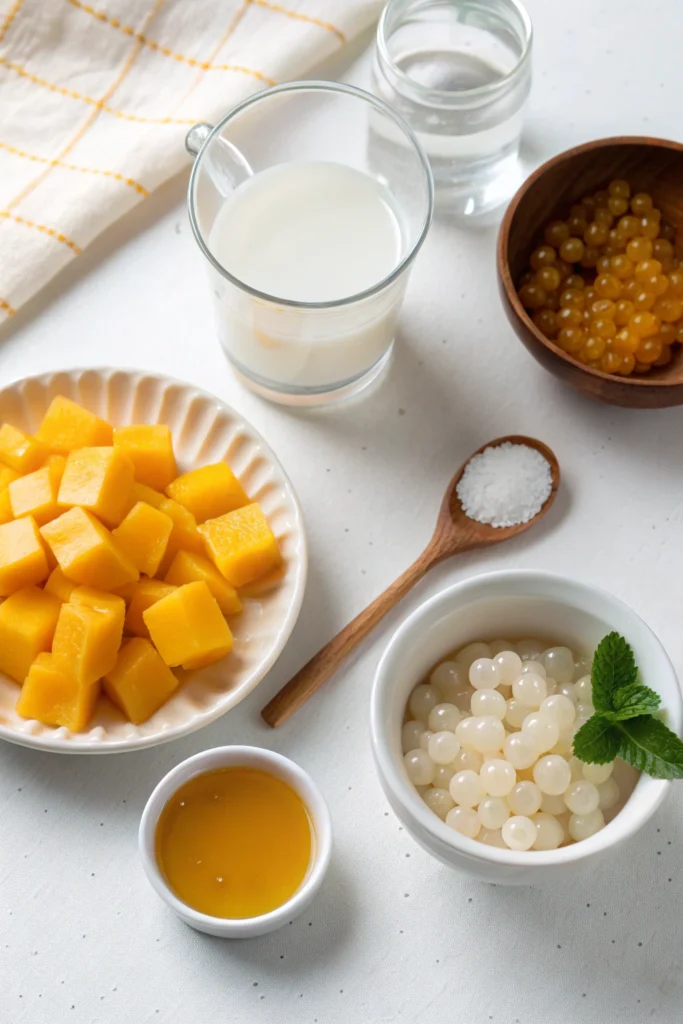
Ingredients:
- 1 ripe mango (diced and pureed)
- ½ cup small sago pearls
- 1 cup coconut milk (chilled)
- 1 tbsp maple syrup or sweetener (optional)
- Ice cubes or cold water
- Extra mango cubes for topping
Instructions:
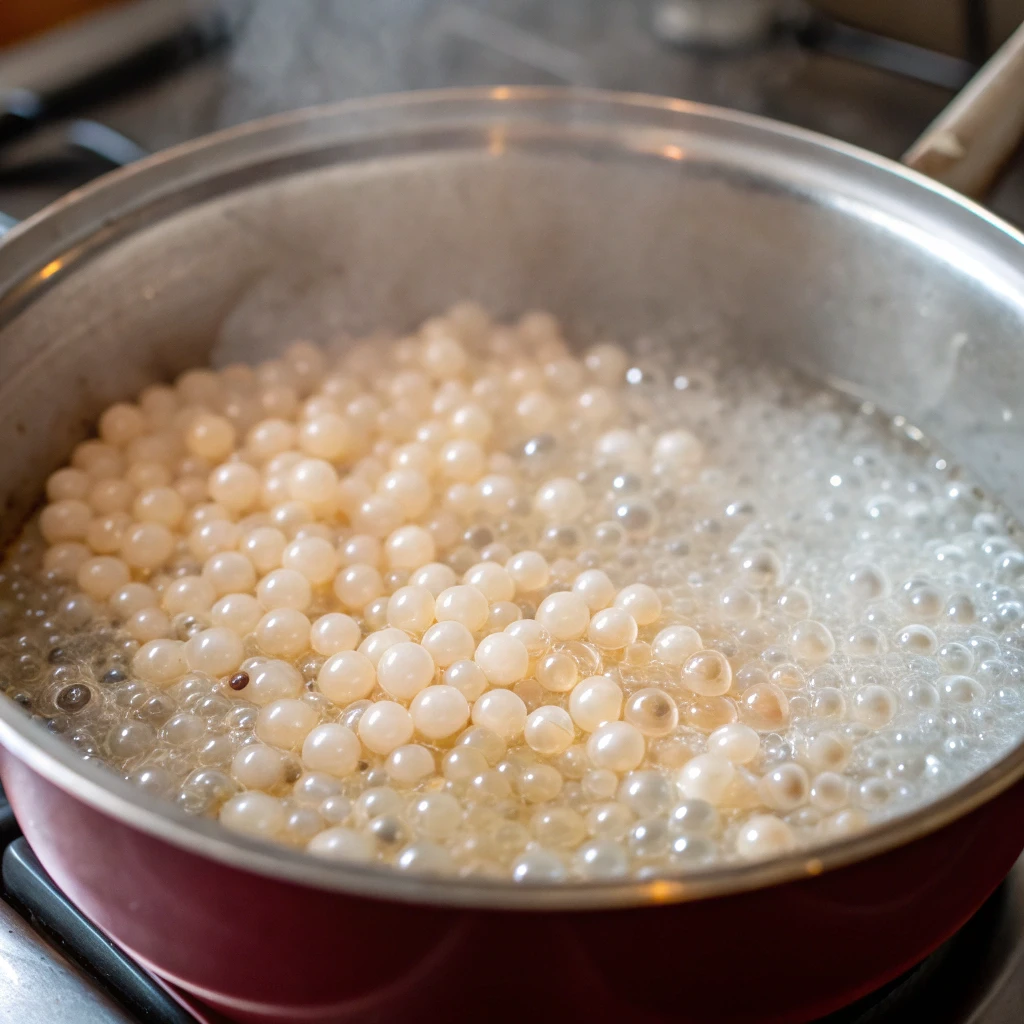
- Cook the sago: Boil 4 cups of water, add sago, and cook for 10–12 minutes until translucent. Stir often.
- Rinse and drain: Once cooked, drain sago and rinse under cold water to remove excess starch.
- Prepare the mango: Blend half the mango into a smooth puree; dice the rest.
- Mix it up: In a bowl, combine sago, coconut milk, mango puree, sweetener, and ice or chilled water.
- Top and serve: Add mango cubes on top and chill before serving.
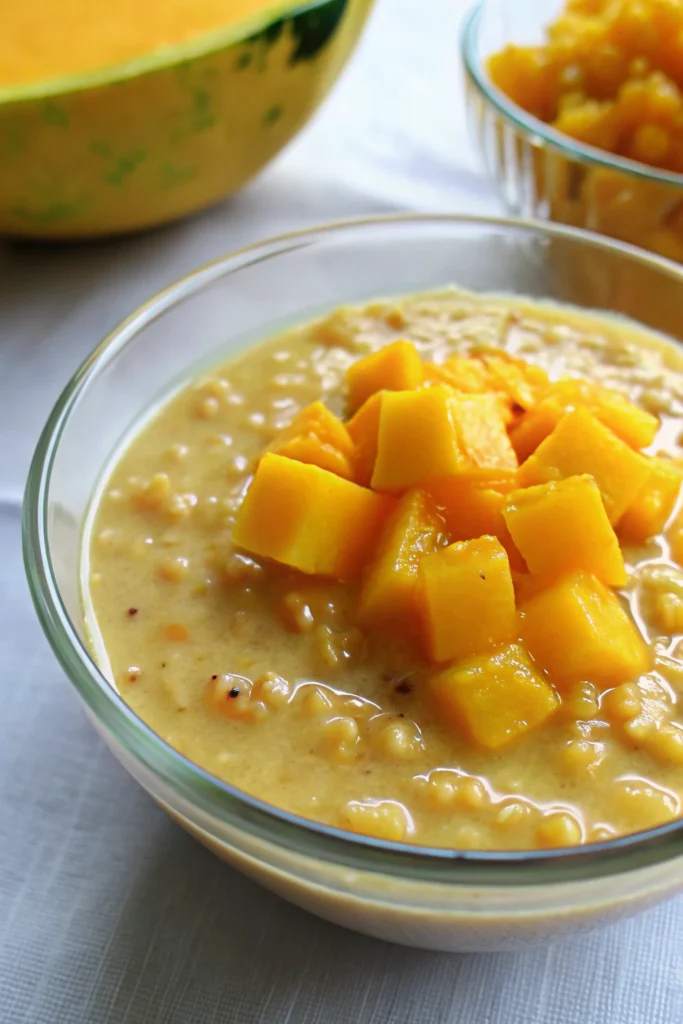
It’s creamy, fruity, and naturally sweet perfect as a post-dinner treat or refreshing snack.
Tools You’ll Need
You don’t need anything fancy just:
- A saucepan (for boiling sago)
- Blender (for mango puree)
- Strainer (for rinsing sago)
- Mixing bowl and spoon
If you want to elevate presentation, serve it in clear dessert glasses to show off the bright yellow color and layered texture.
Tips for the Best Mango Sago
- Use ripe Ataulfo or Alphonso mangoes for natural sweetness.
- Don’t overcook the sago it gets mushy fast.
- Chill everything before serving for the best texture.
- Add a splash of almond milk if coconut milk feels too rich.
Best Ingredients for the Creamiest Mango Sago
Choosing the Right Mango Variety
Not all mangoes are created equal when it comes to desserts. For the smoothest, creamiest mango sago dessert, choose mangoes that are:
- Sweet and fiberless
- Deep orange in color
- Fragrant and juicy
Top mango varieties ideal for mango sago:
| Mango Type | Flavor Profile | Availability |
|---|---|---|
| Ataulfo (Honey) | Buttery, very sweet, smooth | Widely available in USA (spring/summer) |
| Alphonso | Rich, tropical, non-fibrous | Imported, premium option |
| Carabao | Sweet with mild tang | Popular in Southeast Asia |
| Kent | Juicy and soft | Easy to find in U.S. grocery stores |
Avoid mangoes that are stringy or unripe, as they can affect both the texture and taste of the dessert.
Coconut Milk vs. Evaporated Milk
Coconut milk is traditionally used in mango sago dessert for its richness and tropical flavor. However, there are a few options depending on your taste and dietary needs:
| Milk Type | Texture | Flavor | Vegan-Friendly |
|---|---|---|---|
| Coconut milk | Creamy & smooth | Sweet, tropical | Yes |
| Evaporated milk | Thick & silky | Neutral, dairy flavor | No |
| Almond milk | Light | Nutty | Yes |
| Oat milk | Slightly thick | Mellow and neutral | Yes |
For a vegan mango sago, full-fat coconut milk is your best choice. It pairs beautifully with mango’s natural sweetness.
Natural Ways to Boost Flavor
Want to take your mango sago up a notch? Try these healthy, flavorful add-ins:
- Chia seeds: Add texture and a nutritional boost
- Mint leaves: For a fresh aroma and color contrast
- Lime zest: Brightens up the richness of coconut milk
- Maple syrup or agave: If your mango isn’t sweet enough
- Toasted coconut flakes: For crunch and visual appeal
These extras not only improve flavor but also enhance presentation, making your dessert Instagram-worthy.
Storing and Serving Mango Sago Dessert
How Long Does Mango Sago Last in the Fridge?
Mango sago dessert is best enjoyed fresh, but you can store it in the refrigerator for up to 2–3 days. Here’s how to store it properly:
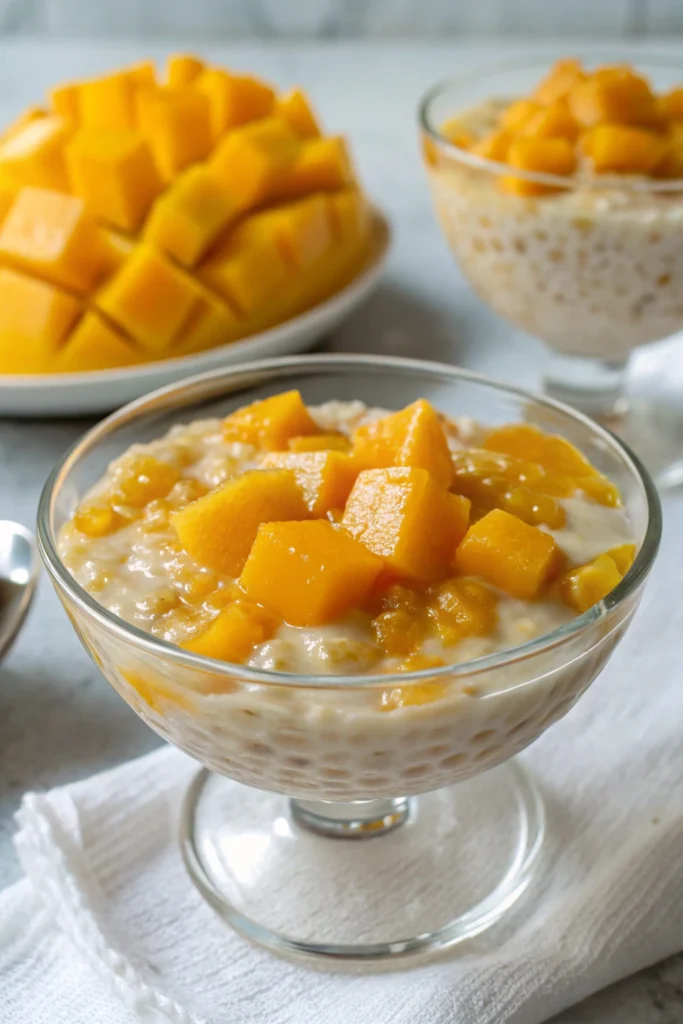
- Use an airtight container to prevent it from absorbing fridge odors.
- Store mango and sago separately if possible. This keeps the texture from turning overly soft or mushy.
- Don’t freeze it freezing ruins the texture of both the sago pearls and mango puree.
Always give it a gentle stir before serving again, and check the mango’s freshness it can oxidize and lose flavor over time.
Tips for Serving It Chilled and Fresh
Mango sago is traditionally served cold, making it a perfect ending to a summer meal or an afternoon pick-me-up. To get the best texture and flavor:
- Chill all ingredients (especially the coconut milk and mango puree) before assembling.
- Add a few ice cubes or crushed ice right before serving for extra refreshment.
- Let it sit in the fridge for 30 minutes to 1 hour before serving if making ahead.
Want to upgrade the experience? Serve it in a clear glass to showcase the vibrant mango color and layered textures.
Presentation Ideas for Special Occasions
For parties or special meals, presentation matters. Here are a few ideas:
- Top with fresh mint leaves, toasted coconut, or lime zest.
- Use small dessert cups or glass jars for single-serve portions.
- Add a swirl of coconut cream or almond milk on top for contrast.
This dessert not only tastes good it looks incredible too. Its golden-yellow hue, glossy sago pearls, and creamy base make it a showstopper.
Want more delicious dessert recipes? Explore more here Dessert Recipes
Related Recipes & Mango Dessert Pairings
Other Mango Desserts to Try
If you love mango sago dessert, you’re going to want more mango in your life. Luckily, there’s no shortage of mango-based treats that are just as simple, healthy, and satisfying. Some reader favorites include:
Mango chia pudding
high in fiber, dairy-free, and perfect for breakfast or dessert
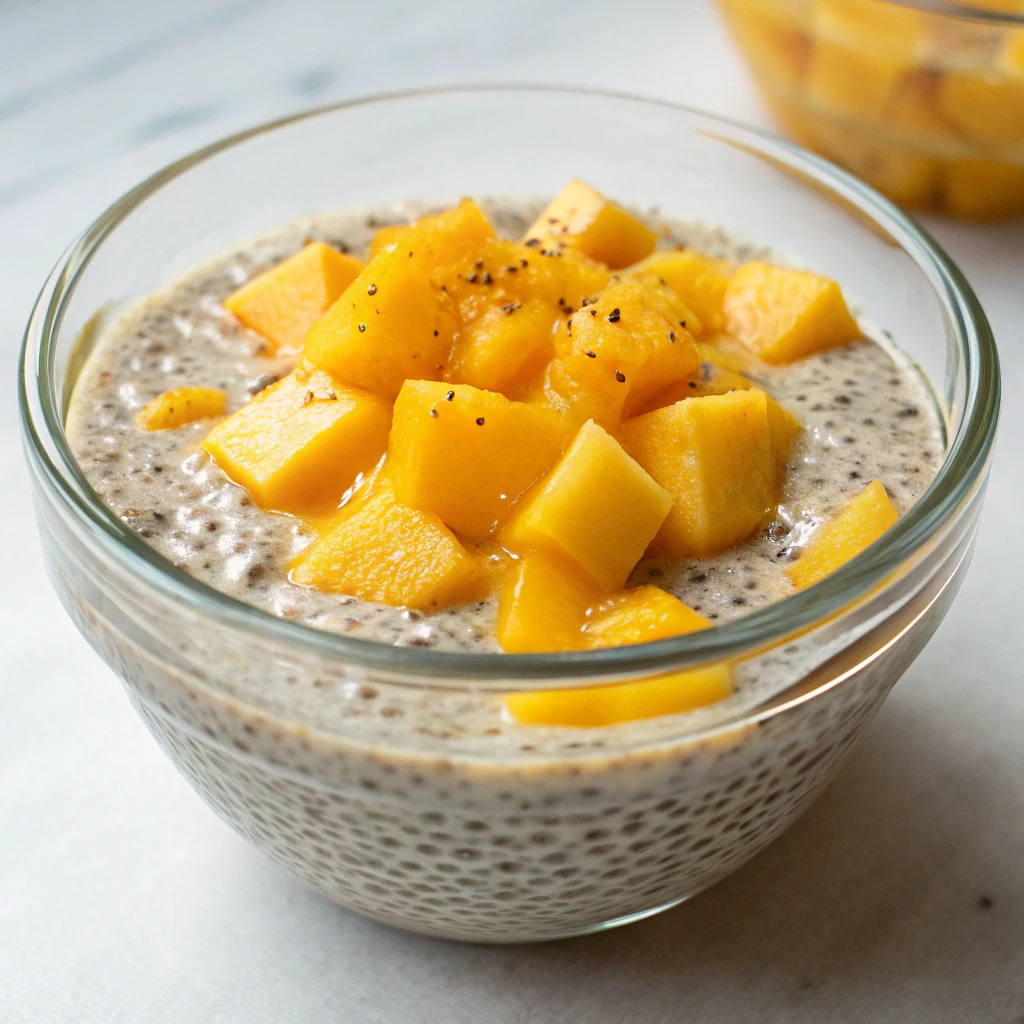
Mango coconut popsicles
cold, creamy, and great for kids
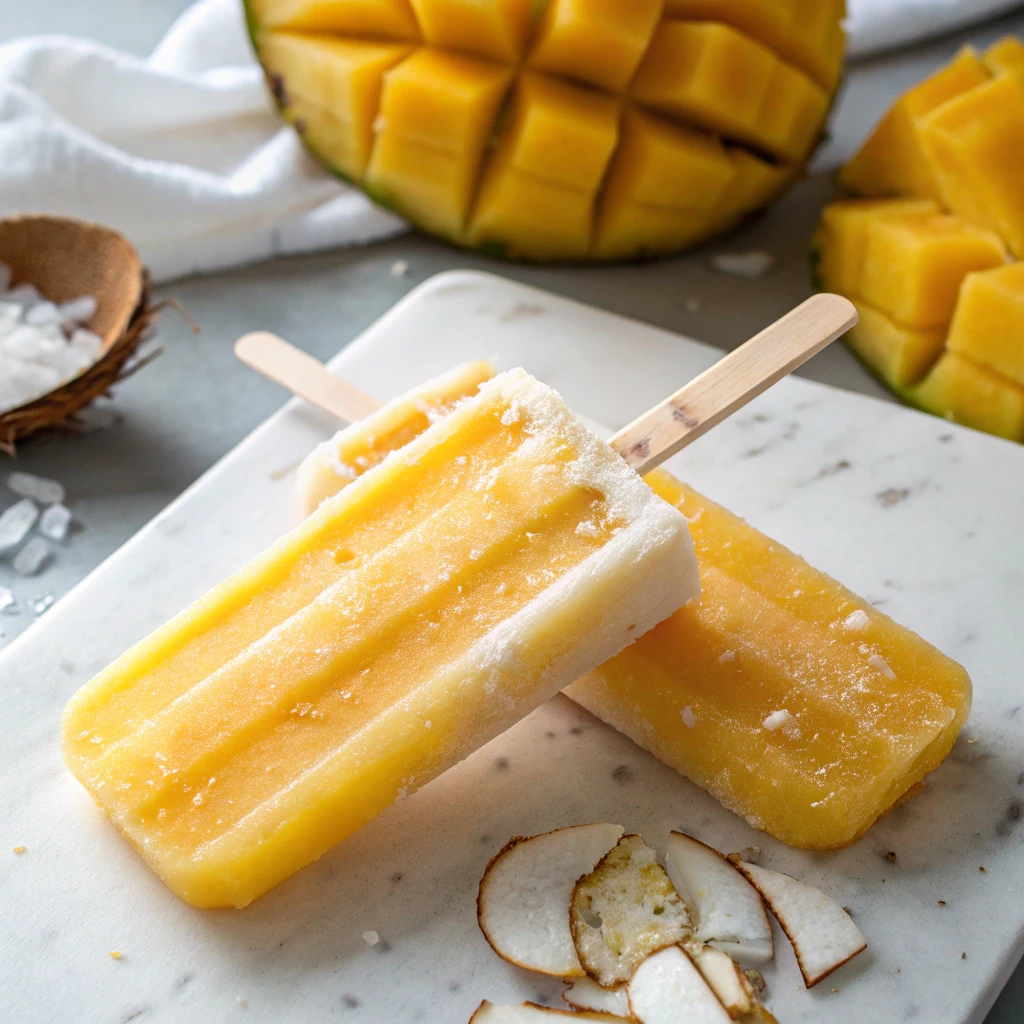
No-bake Mango Cheesecake
rich and tropical, ideal for parties
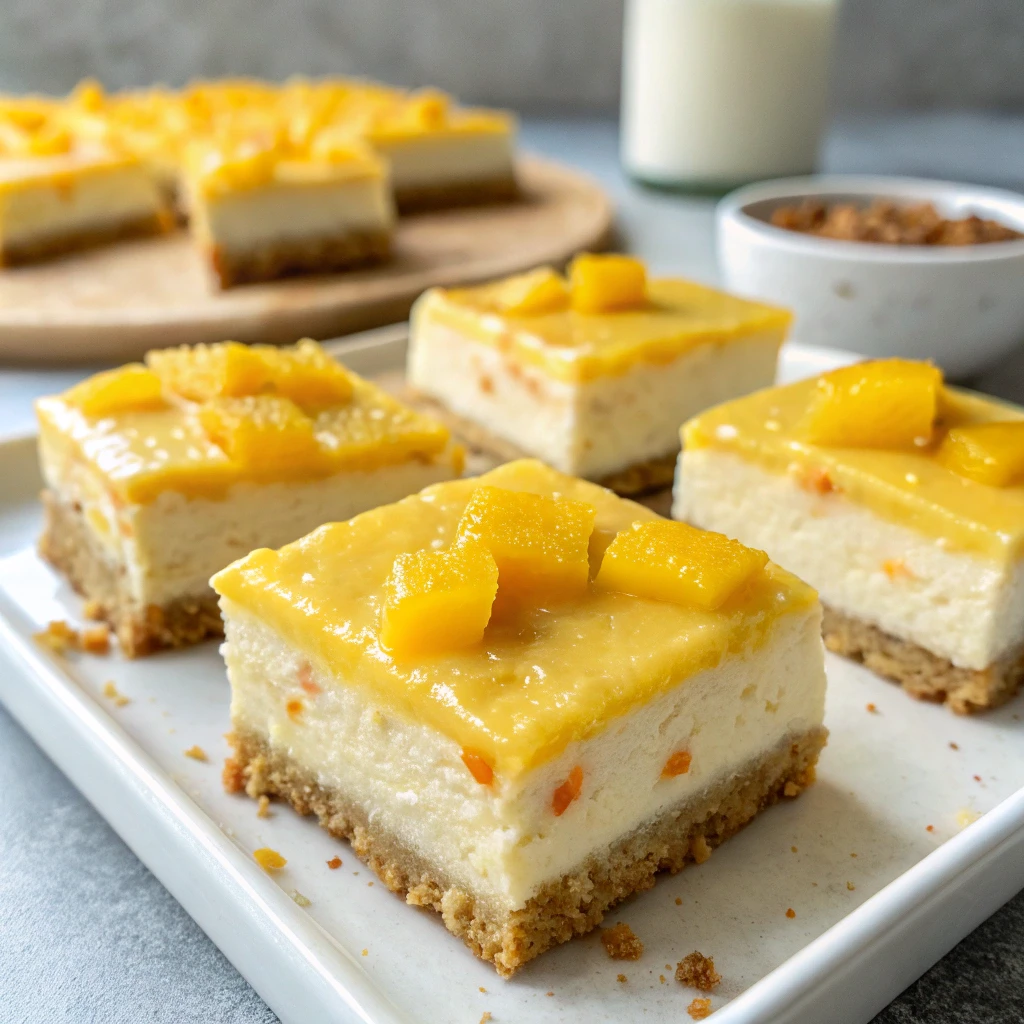
Perfect Pairings with Mango Sago
Mango sago is smooth, creamy, and refreshing but pairing it with something crunchy,
chocolatey, or nutty can elevate the experience. Here are some delicious combos:
- Serve it with almond cookies or sesame crisps for texture contrast
- Pair with herbal teas like jasmine or mint to complement tropical flavors
- Top with roasted nuts or granola for added crunch and protein
Tropical Fruit Combos You’ll Love
Want to remix your mango sago dessert? Add these tropical fruits for bold flavors and color:
- Passionfruit – adds tanginess and seeds for texture
- Pineapple – boosts tropical sweetness
- Dragon fruit or kiwi – makes it Instagram-worthy
- Lychee or longan – for an authentic Asian twist
You can also layer it like a parfait: mango puree, coconut milk, sago, then top with fruits and crunchy bits. It’s easy, elegant, and crowd-pleasing.
Conclusion: Why Mango Sago Dessert Belongs on Your Table
Whether you’re looking for a refreshing summer treat, a light post-dinner dessert, or a taste of Asian tropical flavor, mango sago dessert is a perfect choice. It’s creamy, naturally sweet, and surprisingly simple to make at home.
From its cultural roots in Hong Kong to the health benefits of mango and coconut milk, this dish blends tradition and wellness in a single bowl. Try experimenting with new flavors, mixing in tropical fruits, or serving it at your next dinner party.
Frequently Asked Questions About Mango Sago Dessert
1.What is a mango sago?
Mango sago is a chilled Asian dessert made with ripe mangoes, sago pearls, and coconut milk. It’s creamy, fruity, and often served cold. Originating in Hong Kong, this dessert is now popular across Asia and in global Asian-fusion cuisine. It’s gluten-free, refreshing, and easy to make at home.
2.Is mango sago healthy?
Mango sago can be healthy when made with fresh fruit and without added sugars. Mango provides vitamins and fiber, while coconut milk adds good fats. Sago is high in carbs but low in nutrients, so portion control matters. It’s a light dessert option, especially when compared to traditional cakes or ice cream.
3.What ethnicity is mango sago from?
Mango sago originated from Hong Kong’s Cantonese cuisine in the 1980s. Known locally as “Yang Zhi Gan Lu”, it reflects both Chinese culinary techniques and tropical Southeast Asian ingredients like mango and coconut milk. Its popularity has spread through Taiwan, Singapore, Malaysia, and now globally.
4.Are sago and tapioca the same thing?
No, but they’re similar. Sago comes from the sago palm, while tapioca is made from cassava root. Both are gluten-free and mostly composed of starch. They look and feel the same when cooked, but sago is more common in traditional Asian recipes like mango sago dessert.
5.Is sago good or bad?
Sago isn’t necessarily good or bad it’s just pure starch. It provides quick energy, but lacks fiber, protein, or essential nutrients. It’s easy to digest and fine in moderation, especially when paired with healthy ingredients like mango and coconut milk.
6.Why do people eat sago?
People enjoy sago for its soft, chewy texture and how well it complements other ingredients. It’s often used in puddings and cold desserts across Asia. It also serves as a gluten-free, allergy-friendly base in many sweet dishes.
7.Is there caffeine in mango sago?
No, mango sago contains no caffeine. It’s a fruit-based dessert, usually made with just mango, sago pearls, and coconut milk. There are no teas, coffee, or other stimulants in a traditional mango sago recipe.
8.Is sago good for the gut?
Sago is gentle on the stomach but not a high-fiber food. It’s easily digestible and commonly used during recovery from digestive issues. However, it doesn’t actively improve gut health unless paired with fiber-rich foods like mango or chia seeds.
9.Is sago a carb or protein?
Sago is a carbohydrate, not a protein. It contains very little fat and almost no protein or fiber. In mango sago dessert, it functions more as a texture element rather than a nutritional powerhouse.
👩🏻🍳 Recipe
Print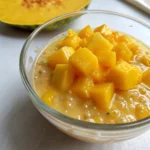
Mango Sago Dessert
- Prep Time: 10 minutes
- Cook Time: 15 minutes
- Total Time: 25 minutes
- Yield: 2 servings
- Category: Dessert
- Method: Boiled + Chilled
- Cuisine: Asian
- Diet: Vegan
Description
Mango Sago is a cool and creamy dessert made with mango, coconut milk, and tiny tapioca pearls. It’s sweet, light, and perfect for summer.
Ingredients
- 1 ripe mango (diced and pureed)
- ½ cup small sago pearls
- 1 cup coconut milk (chilled)
- 1 tbsp maple syrup or sweetener (optional)
- Ice cubes or cold water
- Extra mango cubes for topping
Instructions
- Cook the sago: Boil 4 cups of water, add sago, and cook for 10–12 minutes until translucent. Stir often.
- Rinse and drain: Once cooked, drain sago and rinse under cold water to remove excess starch.
- Prepare the mango: Blend half the mango into a smooth puree; dice the rest.
- Mix it up: In a bowl, combine sago, coconut milk, mango puree, sweetener, and ice or chilled water.
- Top and serve: Add mango cubes on top and chill before serving.
Notes
Chill the coconut milk before using for a creamier texture.
You can soak the sago pearls in water for 10 minutes before boiling to reduce cooking time.
Adjust sweetness to taste mangoes vary in natural sugar.
For a smoother dessert, blend all the mango instead of keeping chunks.
Best served cold. Store leftovers in the fridge and enjoy within 1–2 days.
Nutrition values are estimated and may vary based on specific ingredients or portion sizes used.
Love what you see? Follow me on Facebook and Pinterest for more easy, delicious recipes and daily inspiration!











